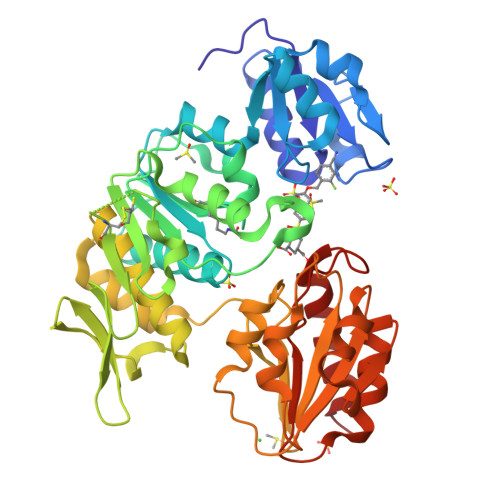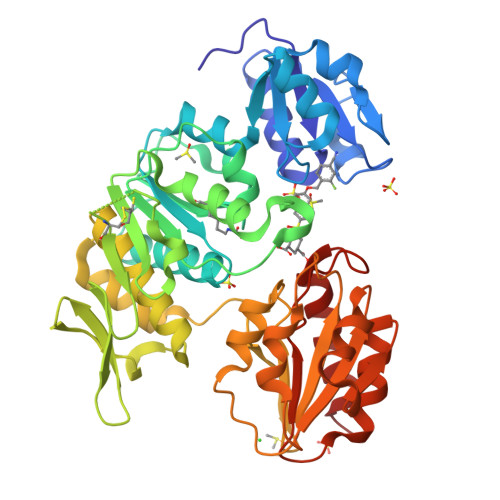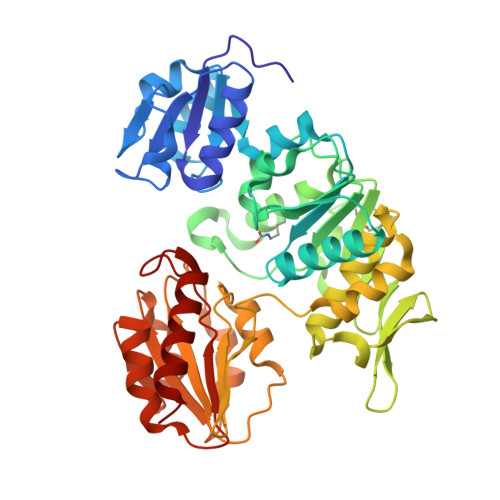Second-Generation Sulfonamide Inhibitors of D- Glutamic Acid-Adding Enzyme: Activity Optimisation with Conformationally Rigid Analogues of D- Glutamic Acid.
Sosi, I., Barreteau, H., Sim, M., Sink, R., Cesar, J., Zega, A., Grdadolnik, S.G., Contreras-Martel, C., Dessen, A., Amoroso, A., Joris, B., Blanot, D., Gobec, S.(2011) Eur J Med Chem 46: 2880
- PubMed: 21524830
- DOI: https://doi.org/10.1016/j.ejmech.2011.04.011
- Primary Citation of Related Structures:
2XPC - PubMed Abstract:
D-Glutamic acid-adding enzyme (MurD) catalyses the essential addition of d-glutamic acid to the cytoplasmic peptidoglycan precursor UDP-N-acetylmuramoyl-l-alanine, and as such it represents an important antibacterial drug-discovery target enzyme. Based on a series of naphthalene-N-sulfonyl-d-Glu derivatives synthesised recently, we synthesised two series of new, optimised sulfonamide inhibitors of MurD that incorporate rigidified mimetics of d-Glu. The compounds that contained either constrained d-Glu or related rigid d-Glu mimetics showed significantly better inhibitory activities than the parent compounds, thereby confirming the advantage of molecular rigidisation in the design of MurD inhibitors. The binding modes of the best inhibitors were examined with high-resolution NMR spectroscopy and X-ray crystallography. We have solved a new crystal structure of the complex of MurD with an inhibitor bearing a 4-aminocyclohexane-1,3-dicarboxyl moiety. These data provide an additional step towards the development of sulfonamide inhibitors with potential antibacterial activities.
Organizational Affiliation:
Faculty of Pharmacy, University of Ljubljana, Aškerčeva 7, 1000 Ljubljana, Slovenia.





















